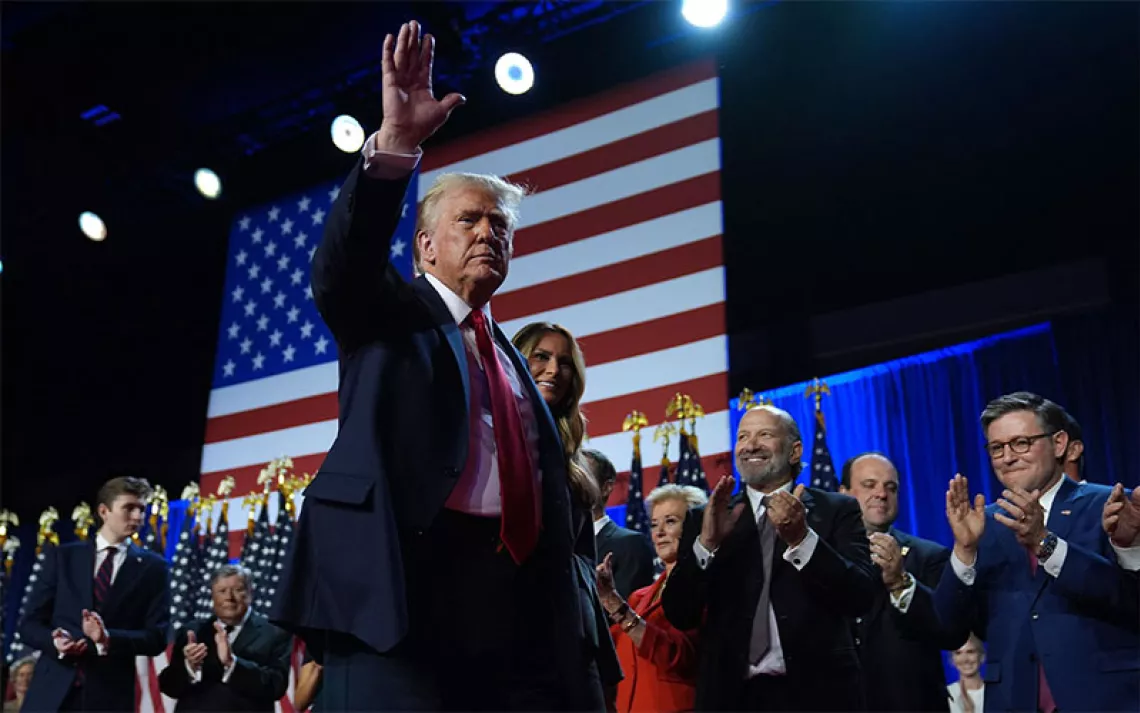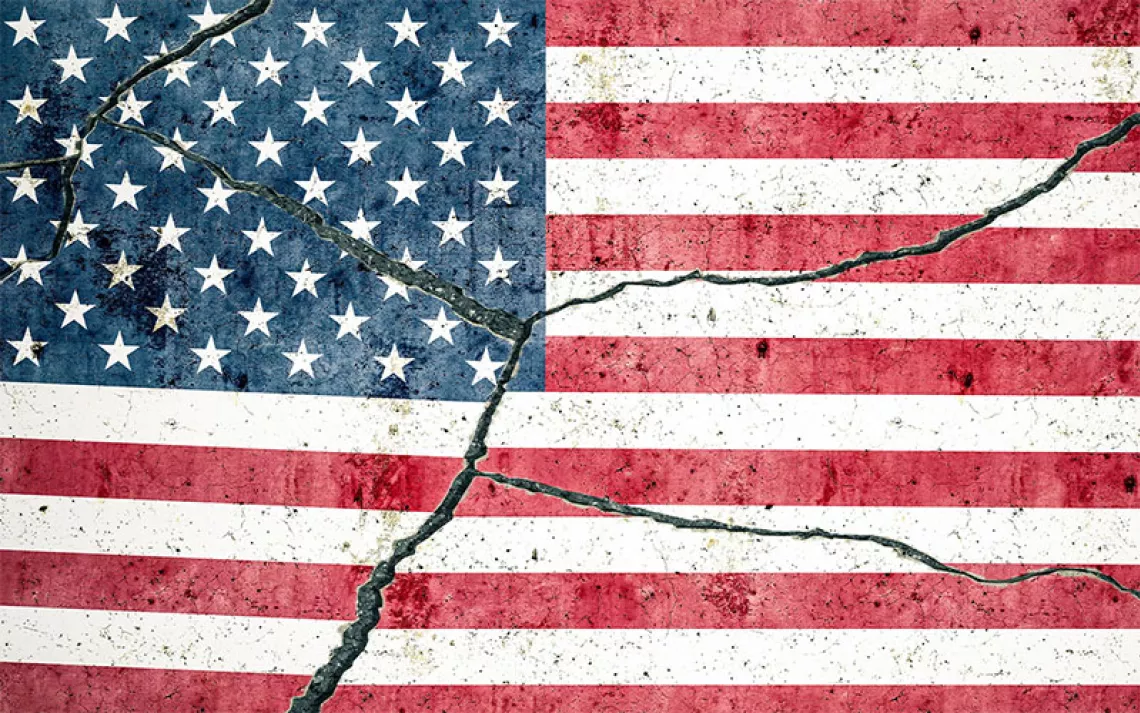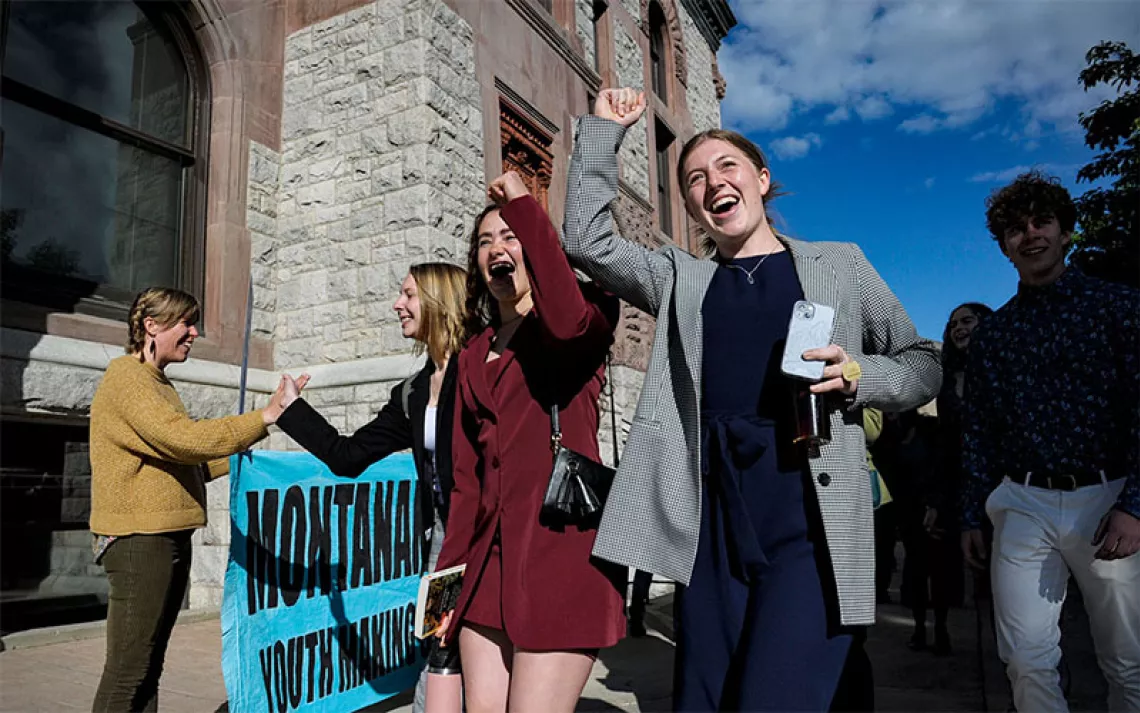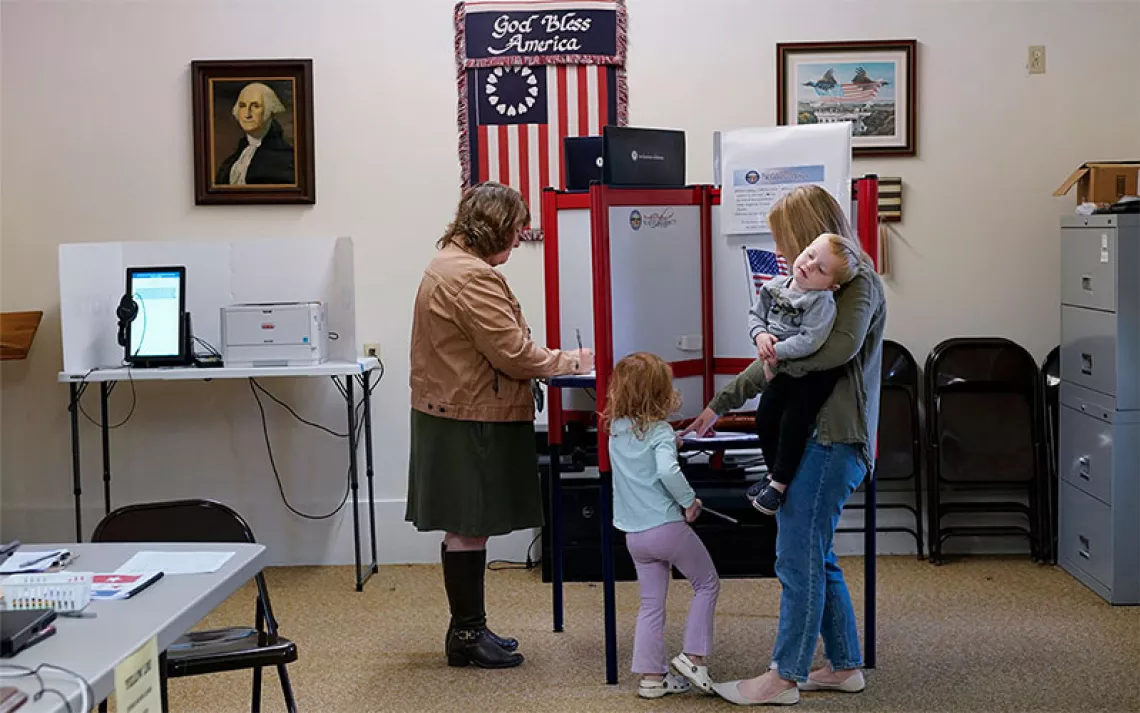A Clean Environment Is a National Good
For decades, a careful balance has been struck between states' rights and federal policies intended to ensure a clean environment for all

Photo by EvanTravels/iStock
When Senator James Inhofe, a Republican from Oklahoma, introduced Scott Pruitt at the beginning of his confirmation hearing to become the head of the Environmental Protection Agency, he stated, “Through the course of his career, Attorney General Pruitt has stood out as a champion of state and individual rights and has fought against federal overreach.” The presentation of Pruitt as a “champion of state and individual rights” against “federal overreach” has become a nearly universal reflex among those who support his ascension from Oklahoma attorney general to administrator of the EPA. Jeb Bush for example, in a December 20, 2016 op-ed for CNN, wrote, “Pruitt and I share a common vision for empowering the states and limiting the intrusion of the federal government in every area of our lives.”
In a May 2015 statement testifying against the Obama administration’s Clean Power Plan, Pruitt said, “When the EPA exceeds the constraints placed upon the agency by Congress, the relationship is thrown out of balance and the rule of law and state sovereignty is affected adversely.” During a House Science Committee hearing in May 2016, he stated that “the EPA was never intended to be our nation’s foremost environmental regulator. The states were to have regulatory primacy.”
But for half a century, a careful balance has already been struck in environmental federal statutes to achieve a state’s right to operate as an environmental regulator and to implement federal environmental standards in a way it deems best. It is a success story for how cooperative federalism in the United States can protect the environment and public health. Those statutes are also grounded on the premise that a state should not be able to do less than the federal standard allows—in other words, to pollute more than neighboring states.
*
For nearly 50 years, environmental law in the United States has been carefully structured to balance, on the one hand, states’ ability to implement and enforce rules and regulations limiting pollution, and on the other, a federal mechanism that endeavors to achieve a baseline standard always be met. This model of cooperative partnership between state and federal government has been in place, with extraordinary results, since 1970.
In general, federal environmental statutes such as the Clean Water Act and the Clean Air Act set a floor for regulatory standards. The states then generally have broad discretion over how to meet the standards set by that floor. They have a legal obligation to meet those standards, and they can also try to do better. States are free to do more, but they’re not free to do less. Under the Clean Air Act, for example, the federal government sets the National Ambient Air Quality Standards—the maximum permissible concentrations for pollutants in the air—but then the states get to decide how to regulate polluters like industrial facilities so that the ambient standards are met.
Federal statutes like the Clean Air Act were created based on a fundamental premise: A clean environment is a national good. States, therefore, cannot make their environment into a dumping ground. Congress and President Richard Nixon created the EPA to enforce the laws that sprang from that premise. People have a right to a basic level of protection from pollution that threatens the environment and public health, a right that should be uniform for all across the country.
That was the consensus view for decades, and until the last 15 years or so, it faced little controversy.
“The federal environmental laws are a model of cooperative federalism, where the federal government sets the standards that protect public health and the environment, and then the states have a lot of discretion on implementation,” says Richard L. Revesz, the Lawrence King Professor of Law and Dean Emeritus at New York University School of Law, where he directs the Institute for Policy Integrity. He is the author of Struggling for Air: Power Plants and the “War on Coal.” “The federal government doesn’t just show up with a one-size-fits-all approach, and doesn’t tell every state: This is the way you have to meet air quality in your state. It says: This is the level of air quality that needs to be attained, and you have a lot of discretion for how to attain it. Or you can have more stringent controls on this industry but not that one. States have a lot of discretion under virtually all of the federal environmental statutes.”
Environmental law since the 1970s, and well into the 1990s, was an area of bipartisan consensus. Most agreed that there needed to be a strong federal role to protect the environment, according to William W. Buzbee, professor of law at Georgetown University Law Center. He is the author of Fighting Westway: Environmental Law, Citizen Activism, and the Regulatory War That Transformed New York City. “That bipartisan consensus included federal laws that preserved substantial roles for the states to tailor regulation to their particular settings, such that they could complement federal regulation. It has always preserved their ability to do more; states have always had the ability to protect their citizens, environment, and health. That’s been the long-standing view: You have federal protections, with cooperative structures for states, and the states can do more.”
This scaffolding around the nation’s environmental legal structure was deliberate. It was the result of a bipartisan response to, and rejection of, a states'-rights-only approach to protecting the environment and public health—an approach that failed spectacularly before 1970. Air and water pollution intensified as the Industrial Revolution ramped up in the mid-to-late 19th century into the 20th century. Without a national standard, pollution was rampant in one state or another depending on that state’s particular pollution controls, which were often inadequate at best.
Without federal statutes, states were also free to have low pollution standards in order to attract business. In the 1960s and before, states had the ability to compete for business by offering lax pollution limits as an incentive. Companies played the game: They could threaten to move to another state if pollution limits in this state were tightened. That structure deterred states from responsibly protecting the health of their own people and encouraged them to water down environmental standards to attract jobs from other states—the so-called race to the bottom.
What if pollution controls today were primarily left to local governments as they were before 1970, without a federal mechanism to enforce a certain baseline protection be met?
“That would take us back more than half a century, to the era of burning rivers and unbreathable urban air,” says Michael Gerrard, director of the Sabin Center for Climate Change Law at Columbia Law School. “The single most important reason why the modern environmental laws were enacted in the 1970s was because the states were unable or unwilling to do it on their own. A major reason we needed federal statutes was to have uniform nationwide rules that would eliminate the race to the bottom, and also inject a degree of science and professionalism into the process.”
Pollution that occurs within states is only part of the problem. The other is interstate pollution. Pollution isn’t static; it moves across state boundaries. That is another reason why a system of federal statutes was needed.
“If there was ever a good reason for federal environmental protection, it’s to control the interstate externalities of pollution traveling across state lines,” Revesz says. “A state doesn’t have much incentive to reduce that pollution. A state would like to get the employment benefits and tax benefits of attracting industry, and as long as its people don’t suffer from that pollution, it would be very happy to send that pollution to downwind states. That’s why we have a federal regulatory scheme—to prevent that from happening.”
Pat Gallagher, director of the Sierra Club’s Environmental Law Program, also points out that climate change is a clear example of why a federal mechanism is needed. “No single state is going to take aggressive action to control greenhouse gas pollution unless they are a really-forward-looking progressive state that views itself as a global citizen, like California,” he says. “But for at least half the states, they won’t have that kind of vision that there’s a global catastrophe looming such that they have to take responsibility at the state level. That’s how environmental law originated. States are too limited in their politics, in their resources, in their expertise to take on massive pollution problems like climate change. You can’t rely on states to do it. That echoes how environmental law came about in the first place: States were not doing a good enough job protecting air, water quality, and wildlife, and so the feds had to step in.”
*
At the time the Clean Air Act was adopted in 1970, California already had its own motor vehicle emissions standards because of the extraordinary smog problem in Los Angeles. So the statute was written such that California could adopt its own rules if it got a waiver from the EPA. Also, according to a 1977 amendment to the original statute, other states could then opt in to the California rules, so that there would be a maximum of two different kinds of cars that could be built: cars that met the national standards and cars that met the California standards.
Over the years, more than a dozen states have adopted the California standards—a primary example of how a state's right to have better, instead of worse, pollution controls can lead the country toward achieving a national good: a cleaner environment.
During his recent confirmation hearing, California senator Kamala Harris asked Pruitt whether he would honor the state’s decades-long ability to have more stringent emissions standards. He demurred, saying, “Senator, as you know, administrators in the past have not granted the waiver, and in fact have granted the waiver—that’s a review process that would be conducted…” Harris then asked, "What is your intention, sir?" Pruitt replied, "I don’t know that, without going through the process to determine that, Senator, and would not want to presume the outcome."
“That was a perfect opportunity for him to say, ‘Yes, I’m in favor of states’ rights, if California wants to do that, we’d applaud that,’” says Revesz, “and instead he did not give a clear answer on that question. So that suggests that the goal is not to empower states to satisfy the preferences of their people, but instead, that there is an anti-regulatory overlay to his world view.”
 The Magazine of The Sierra Club
The Magazine of The Sierra Club



